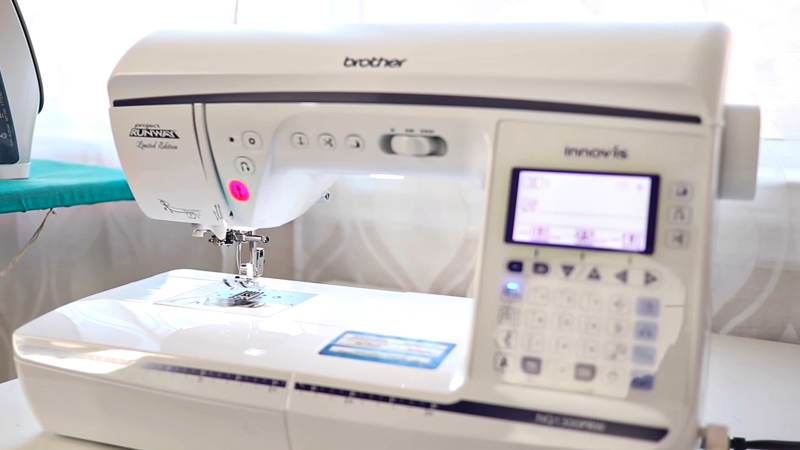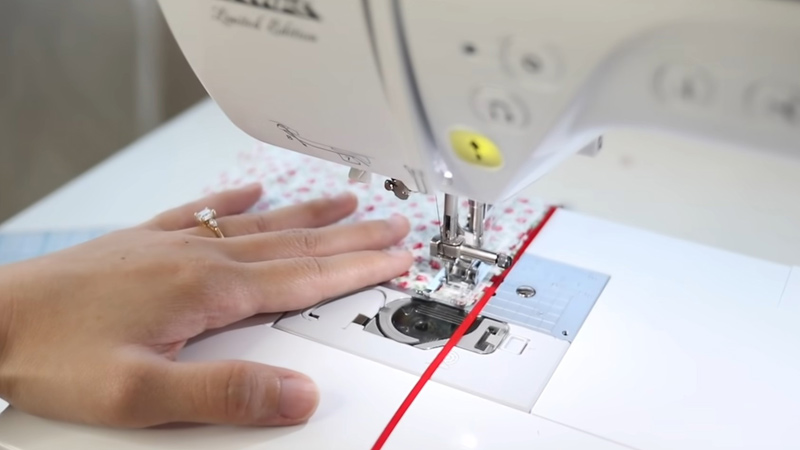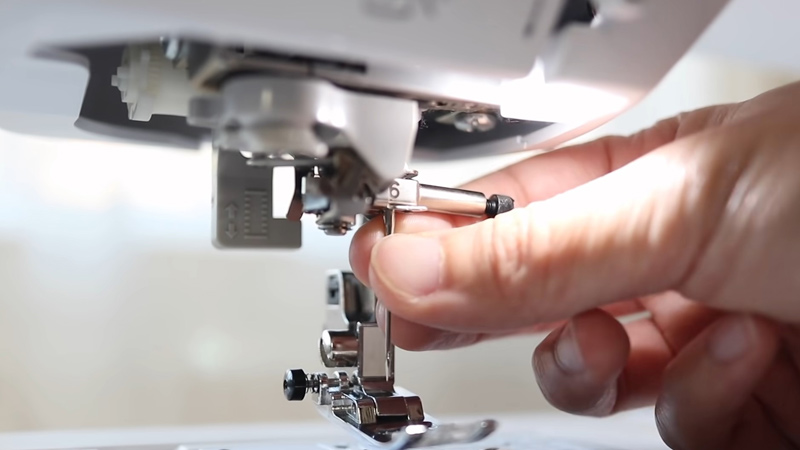A sewing machine, often hailed as a marvel of engineering, transforms fabric into exquisite creations with its intricate mechanics.
At its core, the essence of a sewing machine lies in the delicate dance of forces and mechanisms that guide the fabric through its stitches.
Understanding what propels this remarkable invention is akin to unveiling the secret behind crafting elegant garments and intricate designs.
From the motor’s whirr to the rhythmic movement of feed dogs, the precision of the needle, and the balance of thread tension, every element plays a role in pushing the sewing machine to create beautiful, functional pieces.
This exploration peels back the layers of this ingenious device, revealing the artistry of what truly pushes a sewing machine.

What Pushes a Sewing Machine?
A sewing machine is a marvel of engineering, blending mechanics and precision to create perfectly stitched fabric.
At its heart, the sewing machine’s functionality hinges on a few fundamental components that work in harmony to push, pull, and secure the fabric in place as the needle and thread create stitches.
Let’s delve into what pushes a sewing machine:
The Motor or Manual Power
Sewing machines can be powered by either a motor or manual effort. In most modern sewing machines, an electric motor provides the necessary power.
When you press the foot pedal, the motor springs to life, turning a drive belt that moves various mechanical parts of the machine.
In manual or vintage sewing machines, you operate the machine using a hand crank or a treadle, providing the force needed to sew.
Needle and Presser Foot

The sewing process begins with the needle and presser foot. The needle is the primary tool for puncturing the fabric, creating holes through which the thread can pass.
The presser foot holds the fabric firmly against the feed dogs (explained later) and the machine bed.
Together, the needle and presser foot play a crucial role in moving the fabric forward as the sewing machine operates.
Feed Dogs
Feed dogs are metal teeth located beneath the presser foot. They work in sync with the presser foot to grip the fabric from beneath and move it forward at a consistent rate.
The feed dogs’ motion resembles a set of interlocking gears, pulling the fabric in the desired direction as you guide it with your hands.
Thread Tension Mechanism
Ensuring the proper tension of the thread is essential for the sewing machine’s functionality.
The thread tension mechanism controls the tension applied to the upper and lower threads, allowing them to interlock perfectly as the machine sews.
When the needle and presser foot descend, the tension disks engage, creating the necessary tension for a secure stitch.
Bobbin and Bobbin Case
Beneath the sewing machine’s needle plate lies the bobbin and bobbin case. The bobbin holds the lower thread, while the bobbin case ensures it unwinds smoothly.
As the upper thread, threaded through the needle, and the lower thread from the bobbin come together, they form a stitch that binds the fabric layers. The bobbin case also contributes to the even feed of fabric.
Stitch Regulator and Controls
Modern sewing machines often come equipped with various stitch options and controls. These may include adjustable stitch length, width, and stitch type.
The stitch regulator is responsible for translating your chosen settings into precise movements of the needle and feeding dogs, ensuring the desired stitch pattern is produced.
Presser Foot Lever
The presser foot lever allows you to raise and lower the presser foot. When the presser foot is down, it firmly holds the fabric in place, allowing the feed dogs to move it forward smoothly.
When you raise the presser foot, you can reposition the fabric or remove it from the machine.
Needle Mechanism of Sewing Machine

The needle mechanism in a sewing machine is a crucial component responsible for creating stitches by puncturing the fabric with a needle and guiding the thread through the fabric layers.
Understanding the needle mechanism is fundamental for achieving accurate and precise sewing results.
Here’s an in-depth look at the needle mechanism of a sewing machine:
Needle Design and Attachment
Sewing machine needles are typically slender, with a pointed end and an eye for threading the upper thread. They are attached to the needle bar, which moves up and down as the machine operates.
Up-and-Down Motion
The primary motion of the sewing machine needle is a rhythmic up-and-down movement. When you engage the machine, whether manually or through a motor, the needle bar moves in a controlled manner, causing the needle to penetrate the fabric on its downward stroke.
Needle Plate and Feed Dogs
Below the needle, there’s a needle plate that provides a solid surface for the fabric to rest on. Positioned beneath the needle plate are feed dogs, which work in harmony with the needle.
They grip the fabric from beneath and move it forward at a consistent rate as the needle descends.
Stitch Formation
As the needle penetrates the fabric, it creates a small hole or puncture. The upper thread, threaded through the needle, is pulled through the fabric layers by the needle’s motion.
The lower thread (from the bobbin) interlocks with the upper thread within the fabric layers, forming a secure stitch.
Needle Positions
Sewing machines often allow for adjusting the needle position. This adjustment is useful for achieving different seam allowances and stitch widths. Some machines offer multiple needle positions, including left, center, and right positions.
Needle Types for Specific Tasks
Different needle types are designed for various fabrics and purposes. For example, there are universal needles, ballpoint needles for knits, denim needles for heavy fabrics, and more. Needle selection should be based on the fabric type and sewing project.
Needle Maintenance
Regularly changing and maintaining the sewing machine needle is essential for optimal stitching results. Needles can become dull or bent with use, leading to skipped stitches or fabric damage.
FAQS
What is sewing machine motion?
Sewing machine motion refers to the movement and coordination of various components within a sewing machine that work together to sew fabric, including the needle, feed dogs, and presser foot.
How does the motion of the needle of a sewing machine work?
The motion of the needle in a sewing machine involves the up-and-down movement of the needle as it punctures the fabric to create stitches.
What are the different sewing machine motion types?
Sewing machines can have various motion types, such as straight stitches, zigzag, or decorative stitches.
How does the motion of the footrest in a sewing machine affect sewing?
The motion of the footrest, also known as the presser foot, is pivotal in sewing as it holds the fabric in place against the feed dogs and the machine bed.
What role does the moving wheel of a sewing machine play in sewing?
The moving wheel of a sewing machine, often part of the handwheel or motor-driven mechanism, controls the overall motion of the machine.
Last Words
The intricate ballet of forces and mechanisms that propel a sewing machine is nothing short of remarkable.
From the rhythmic motion of the needle, deftly piercing fabric, to the synchronized dance of feed dogs and presser foot, every element plays a vital role in the creation of stitched masterpieces.
Whether powered by the steady hum of an electric motor or guided by the gentle push and pull of a manual hand crank, sewing machines have empowered generations to bring their creative visions to life through fabric and thread.
Understanding what pushes a sewing machine reveals not only the science behind its operation but also the artistry that transforms simple materials into beautiful, functional works of craftsmanship.
Leave a Reply